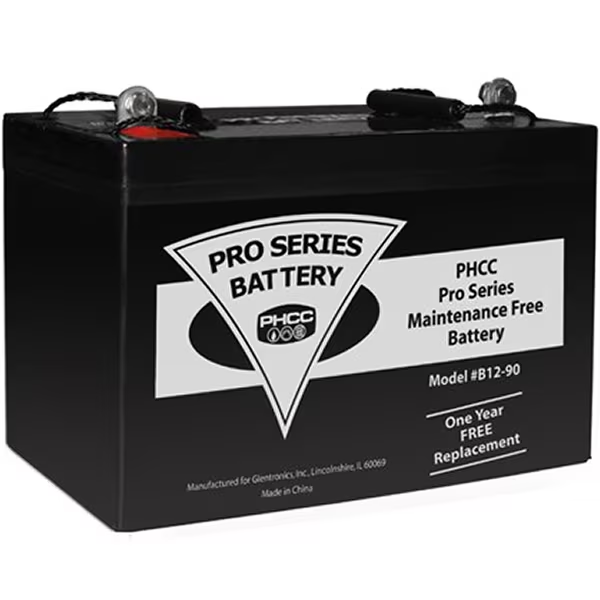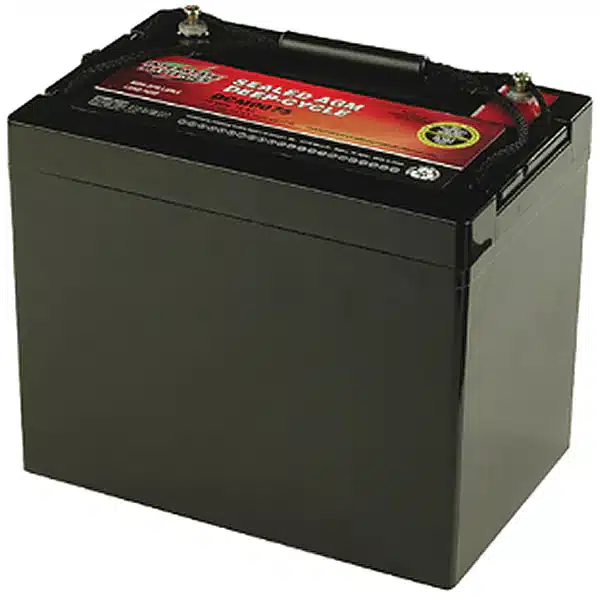How to Pick the Perfect Backup Battery for Sump pump.
If you’ve ever dealt with a flooded basement, you know how important it is to be prepared. Even if you haven’t, it’s always better to prevent the problem rather than face the mess after the fact.
One key element to consider is what happens to sump pump during a power outage. Without power, your pump is useless unless you have a backup battery for sump pump. But with so many battery options on the market and few labeled specifically for sump pumps, how do you pick the right one?
You can always make things easier by purchasing a backup sump pump that comes with its own battery. But if you’re in need of a replacement or just want to be extra prepared, here’s what you need to know.
What are the Common Terms Used to Describe Batteries?

When shopping for a backup battery for a sump pump, you might feel overwhelmed by all the terms being thrown around like “deep-cycle,” “Low Maintenance,” “marine,” and “solar.” It can get confusing fast since these terms are often used interchangeably for standby lead-acid batteries.
But don’t worry, I’ve got you covered. Let’s break down what each of these battery types really means so you can easily figure out which one is the perfect fit for sump pump and keep your basement safe, even during a power outage.
When you see the term “deep-cycle,” it’s not actually referring to the type of battery, but to how it charges and discharges. It’s important to know this when choosing a backup battery for sump pump. Deep-cycle batteries are built to provide steady power over a longer period, making them ideal for sump pumps that need reliable performance during storms or outages.
Deep-cycle batteries are designed to handle frequent charging and discharging hence the term “cycling” without wearing out too quickly. While they don’t offer the high bursts of power like wet-cell batteries, they’re built with thicker plates that allow them to discharge more deeply.
If you’re looking for a middle ground between strong starting power and steady long-term use, you might want to consider a Marine/RV backup battery for sump pump, as it balances both traits effectively.
Low-Maintenance Batteries
The term “Low Maintenance” can be a bit misleading, especially when it comes to batteries. For wet-cell types, being maintenance-free typically means the battery is sealed and may be valve-regulated (VRLA), which helps recycle the hydrogen and oxygen produced, reducing leakage and evaporation. However, despite the name, these batteries still need attention to prevent the cells from drying out and losing their ability to cycle effectively. So, when choosing a backup battery for sump pump, just know that even “Low Maintenance” options may need a little upkeep.
Types of Lead-Acid Backup Batteries
1. Wet Cell Batteries

Wet cell batteries, also known as flooded batteries, are the most budget-friendly option. You often see these in car batteries they’re great for giving your car a quick start, but they’re not built for the long haul. When it comes to a backup battery for sump pump, you wouldn’t want to rely on these for extended use. They’re designed for short bursts of power, which is why they’re often referred to as “starting batteries.” However, if you’re looking for something that can handle continuous use, you might want to consider a deep-cycle version instead.
Wet cell batteries, with their lead plates soaked in an electrolyte liquid, are a common choice. They come in both sealed and unsealed versions. While they might be the least expensive, maintaining them can be tricky. Regular checks are necessary to ensure the lead cells don’t dry out and get damaged. Handling these batteries can be a bit risky, think lead, acid, and the potential for noxious fumes or even explosions. For your backup battery for sump pump, you might want to consider the ease of maintenance along with its performance.
2. AGM Batteries

AGM batteries, which stands for Absorbed Glass Mat, are a fantastic choice for a backup battery for sump pump. They’re a step up from traditional batteries, designed with lead-acid cells wrapped in glass fiber. This setup absorbs just enough electrolyte to keep things moist, without the risk of leaking if the battery gets punctured. Plus, they’re safer and more reliable.
What’s great about AGM batteries is that they’re truly maintenance-free. You won’t have to worry about checking or adding water like you would with other types. Although they come with a higher price tag, their safety features, durability, and efficient performance make them a worthwhile investment for keeping sump pump running smoothly.
3. Gel Batteries
Gel batteries are a great option for a backup battery for sump pump, especially if you’re dealing with extreme conditions. They’re similar to wet-cell batteries but use a gelled electrolyte, which is a bit like the material found in those little packets that come with vitamins. This gel makes them highly resistant to evaporation, so they’re perfect for situations with extreme temperatures or lots of vibrations.
You’ll often find gel batteries in racing cars, off-road vehicles, and even in wind and solar energy systems. While they’re excellent in tough conditions, the gel design does mean that they charge a bit slower and have lower peak current capacity compared to other types. If you need a battery that can handle rough conditions while keeping sump pump ready for action, gel batteries are a reliable choice.
How to Check Your Backup Battery for Sump Pump?
Even though your backup battery for sump pump might be labeled as “Low- Maintenance,” it’s still a good idea to give it a quick check-up now and then. But how do you check a sealed battery? Here’s a simple way: look for a sight glass on the battery. It’ll show you if the electrolyte levels are getting low. If there isn’t a sight glass, you can use a multimeter to check how the battery is performing.
Pro Tip: No matter the type, avoid placing or storing your battery directly on the ground. Doing so can drain the battery and reduce its lifespan. Instead, use a battery case, keep it elevated at least 3-4 feet off the ground, and make it a habit to check and clean the battery terminals every 3 months, following the manufacturer’s recommendations.
This way, your backup battery for sump pump will be ready to keep sump pump working when you need it most.
Ready for the Unexpected: Backup Battery for Sump Pumps.

Now that you’re equipped with the know-how to choose the perfect backup battery for sump pump and understand when and how to replace it, you can rest easy knowing you’re prepared for whatever comes your way.
If you have any questions about specific backup battery for sump pumps, don’t hesitate to reach out. The experts at Sump Pumps Direct are here to help and ensure you have everything you need to keep your home safe and dry.
